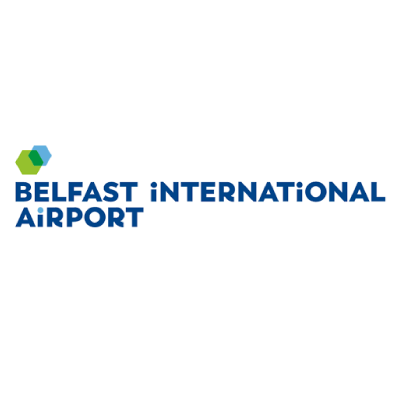How airports diversify F&B and retail offerings to accommodate the post-pandemic traveller
As passengers return to the airport post-pandemic, it’s clear that what they want from their airport experience is very different from what they had before. The COVID-19 pandemic has influenced change in the way people live their lives. We’ve also seen a soar in ecommerce growth and digital transformation, so it’s no real surprise that passengers expect these changes to be reflected in their travel experience too.
While many airports appreciate that change is necessary, some are still unsure how to adapt their airport diversification strategy to meet the needs of today’s passengers. So, to get you started, we’ve shared some of our top tips for diversifying airport food and beverage and retail offerings (key non-aeronautical revenue drivers) to accommodate the post-pandemic traveller.
Do your research and use data to develop your airport ecommerce strategy
New research shows that Millennial and Gen Z passengers now account for three-quarters of the market, compared with two-thirds before the COVID-19 pandemic. As this demographic increasingly dominates the market, airports need to ensure they know these passengers, appreciate their level of digital competency and understand how to engage with them effectively. Essentially, designing the airport experience around passengers’ emerging demands.
But to get it right, airports need to harvest data and understand the preferences and behaviours of post-pandemic passengers. This can be achieved in several ways, from community focus groups aimed at discovering what passengers currently enjoy and engage with at the airport to digital approaches, like contactless customer feedback at the airport and email surveys.
“Mobile applications, websites, smartphones, smartwatches, visual screens and kiosks, there are a lot of instruments in airports to collect data and convert it to passenger satisfaction.”
As Aziz Can Aksoyek, Head of Sales and Business Development at TAV Technologies, pointed out at the International Airport Review Online Summit, airports have a wealth of tools and touchpoints they can tap into to engage with and collect data from passengers. It’s all about having the right airport technology and strategies to optimise each touchpoint, which Rezcomm can provide.
Develop your airport ecommerce strategy with online retail
Today’s passengers are already familiar with ecommerce. Whether they’re ordering groceries, buying clothing or even booking flights and hotels, most people use ecommerce interfaces in their everyday lives, so why not at the airport?
“Before COVID, these sort of systems were seen as a nice to have for airports. But after COVID, all these systems are becoming the new normal for many airports around the globe,” said Aziz Can Aksoyek at the IAR Summit.
To remain viable and competitive, airports must consider digitising airport retail and F&B to provide passengers with a seamless experience. For example, online retail with click and collect or home/gate delivery makes it easier for passengers to pick up the travel products they need before boarding the plane without having to spend time queuing in retail stores at the airport.
Access to online duty-free means passengers can shop for the luxury products they desire without the time constraint of needing to catch their flights. In addition, more money is likely to be spent as passengers aren’t under pressure to make a purchasing decision there and then. Instead, they can browse the products on the airport’s ecommerce website at their leisure and pick them up from the airport or even enjoy the luxury of having their order delivered to the gate.
Airport ecommerce offerings can also benefit passengers on their return home. Say, for example, they wanted to order groceries to save them from stopping at the shops on their journey home. The passenger arrives on the airport’s ecommerce website, orders the groceries and arranges to collect them on arrival at the airport (bagged and ready to go) or have them delivered to their door on their return home. It’s easy, quick and convenient for the passenger, helping to boost their overall experience. And for the airport, it’s a great way to unlock more revenue.
Build future-ready ecommerce with pre-order F&B
You can also digitise your F&B offerings to meet the needs and expectations of post-pandemic travellers. For example, using Rezcomm’s Food and Beverage module, airports can provide passengers with pre-order food and beverage services from their websites, integrating with coffee shops, restaurants and bars to deliver a completely seamless experience.
Pre-order F&B provides many benefits, from removing the need to queue at the airport (ticking both the safety and convenience boxes) to offering the luxury experience of gate or lounge delivery.
And that’s something that all airports should remember. Yes, passengers want a safe airport experience post-pandemic, but they also want it to be enjoyable. If they’re having a good time, they’re more likely to spend money at the airport.
Diversifying airport retail
While airport retail remains a crucial source of non-aeronautical revenue for airports, a surprising 72% of travellers currently believe that there is too much retail in the airport, and many would rather see physical stores replaced with more seating and F&B options.
With this in mind, airports must seek to reimagine their retail spaces and consider how they can offer a retail experience that is more attractive to the post-pandemic traveller. For instance, using technologies like Augmented Reality to transform retail outlets into immersive showrooms or offering comfortable seating and F&B within the retail space to deliver a more holistic experience to passengers.
“As we start to lose dwell time with the wonderful technologies that are around the corner, our role becomes more about being a place of interest, entertainment and attractiveness, rather than being a place of transaction,” said VINCI Airports’ Director of Non-Aeronautical Sales, Pierre Abignano at the IAR Online Summit.
Airports must consider how they can best use passengers’ shortened dwell time to ensure they leave having had a fantastic experience and want to share it with others and return to the airport again. Of course, it’s essential to drive transactions and revenue. However, it’s also important to consider the impact a fresh, exciting and unique airport retail or F&B experience can have on passenger engagement, loyalty and brand advocacy in the long term. Develop your airport ecommerce strategy with the bigger picture in mind.
Consider what makes your airport unique
Something else the airport leaders highlighted at the IAR Online Summit was the need for airports to differentiate their offerings.
“When there’s a local atmosphere throughout the airport and its services, conversion rates and revenue go up,” said Vladyslav Ilyin, Chief Commercial Officer of Aviation Revenues at Kharkiv Airport.
The post-pandemic traveller doesn’t want to shop from the same retail stores or dine in the same restaurants they can find in any part of the world. Instead, they want to eat what the locals eat, buy products they won’t find elsewhere and experience a flavour of what makes that particular airport and destination special.
“There’s a great opportunity for airports to find a unique and particular thing they can use and promote, and this will push people to buy something local and maybe come back and feel the experience once again. If the airport looks like any other airport and has the same shops, there is no special experience or feeling generated for this particular visitor at the airport. We must understand that the airport has a big share of the passenger or visitor experience, whether it’s a business or leisure visitor,” added Vladyslav.
Consider how you can diversify your F&B and retail offerings to represent your destination and use your airport as a stage to offer passengers a unique experience.
“Celebrate the uniqueness of the airport and platform of the airport. If we deliver that, we become interesting, and it will drive its own rewards, both direct & indirect,” said Pierre Abignano.
Communicating new digital retail experiences and F&B offerings to passengers
Finally, the diversification and digitalisation of your airport’s F&B and retail offerings must come with a robust digital marketing strategy. After all, if your passengers don’t know about all of your new ecommerce services, they won’t use them. Communicate your offerings with existing passengers through personalised email marketing. Tailor ecommerce offers based on passengers’ booking history and behaviour and drive spending with retail vouchers that can be redeemed on purchases at your airport.
Encourage new customers to use your ecommerce services via social media and use digital advertisements in your terminals to increase awareness and encourage email sign-ups. Remember, to increase the likelihood of passengers giving their email marketing permissions, you need to offer something of value in return. This could be exclusive content, discount vouchers for your airport retail stores or perhaps even something like free delivery with their next F&B preorder.
Build future ready ecommerce for airports with Rezcomm
Ready to impress post-pandemic passengers with next-generation F&B and retail offerings at your airport? Download our ecommerce brochure and book a meeting with Rezcomm to find out how our airport technology and experts can support your digital transformation.






























